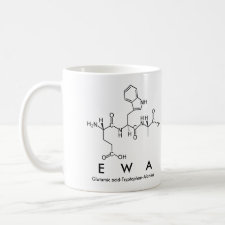
Authors: Ncube S, Kunene P, Tavengwa NT, Tutu H, Richards H, Cukrowska E, Chimuka L
Article Title: Synthesis and characterization of a molecularly imprinted polymer for the isolation of the 16 US-EPA priority polycyclic aromatic hydrocarbons (PAHs) in solution.
Publication date: 2017
Journal: Journal of Environmental Management
Volume: 199
Page numbers: 192-200.
DOI: 10.1016/j.jenvman.2017.05.041
Alternative URL: https://www.researchgate.net/publication/317108832_Synthesis_and_characterization_of_a_molecularly_imprinted_polymer_for_the_isolation_of_the_16_US-EPA_priority_polycyclic_aromatic_hydrocarbons_PAHs_in_solution
Abstract: A smart sorbent consisting of benzo[k]fluoranthene-imprinted and indeno[1 2 3-cd]pyrene-imprinted polymers mixed at 1:1 (w/w) was successfully screened from several cavity-tuning experiments and used in the isolation of polycyclic aromatic hydrocarbons from spiked solution. The polymer mixture showed high cross selectivity and affinity towards all the 16 US-EPA priority polycyclic aromatic hydrocarbons. The average extraction efficiency from a cyclohexane solution was 65 ± 13.3% (n = 16, SD). Batch adsorption and kinetic studies confirmed that the binding of polycyclic aromatic hydrocarbons onto the polymer particles resulted in formation of a monolayer and that the binding process was the rate limiting step. The imprinted polymer performance studies confirmed that the synthesized polymer had an imprinting efficiency of 103.9 ± 3.91% (n = 3, SD). A comparison of the theoretical number of cavities and the experimental binding capacity showed that the overall extent of occupation of the imprinted cavities in the presence of excess polycyclic aromatic hydrocarbons was 128 ± 6.45% (n = 3, SD). The loss of selectivity was estimated at 2.9% with every elution cycle indicating that the polymer can be re-used several times with limited loss of selectivity and sensitivity. The polymer combination has shown to be an effective adsorbent that can be used to isolate all the 16 US-EPA priority polycyclic aromatic hydrocarbons in solution
Template and target information: benzo[k]fluoranthene, indeno[1 2 3-cd]pyrene
Author keywords: polycyclic aromatic hydrocarbons, molecular imprinting technology, Molecularly imprinted polymers, Benzo[k]fluoranthene, Indeno[1 2 3-cd]pyrene



Join the Society for Molecular Imprinting

New items RSS feed
Sign-up for e-mail updates:
Choose between receiving an occasional newsletter or more frequent e-mail alerts.
Click here to go to the sign-up page.
Is your name elemental or peptidic? Enter your name and find out by clicking either of the buttons below!
Other products you may like:
 MIPdatabase
MIPdatabase









